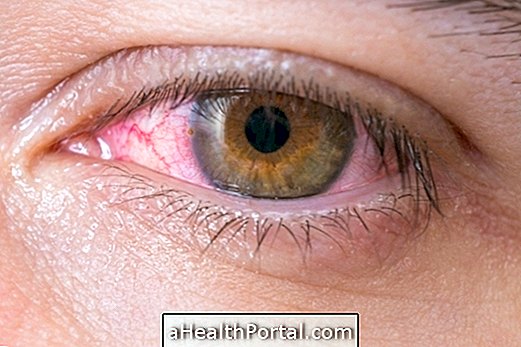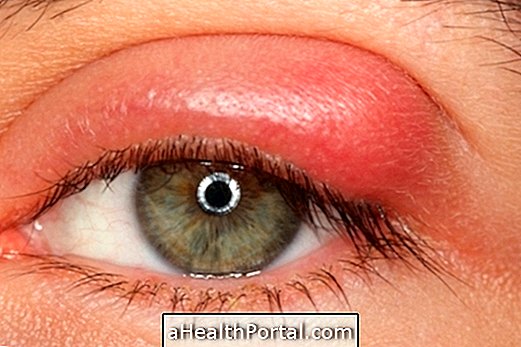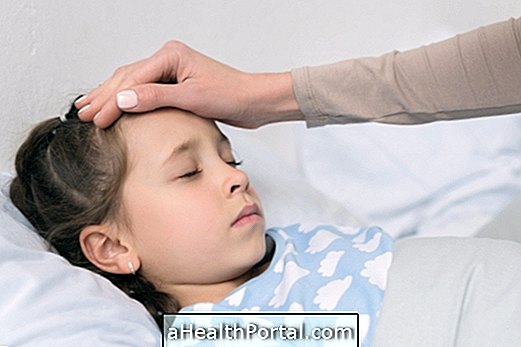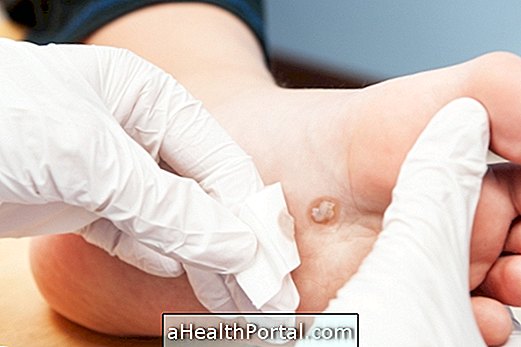Red eyes may indicate that the person has some irritation due to the drier environment, tiredness or irritation due to the use of creams or makeup that may be causing an allergic reaction. However, redness in the eyes can also be caused by some diseases and so when this symptom is frequent you should go to the doctor to find out its cause and thus start the appropriate treatment.
The ophthalmologist may observe the eyes and perform a vision examination because when the subject has red and irritated eyes, he may also be with some visual difficulty, which can also cause another frequent symptom, headache and sometimes just use a eye drops or using prescription glasses or anti-glare lenses to control these symptoms.
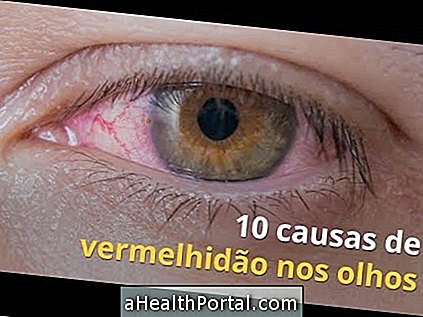
Some common eye conditions and eye conditions that may leave red eyes are:
1. Cisco or foreign body in the eye
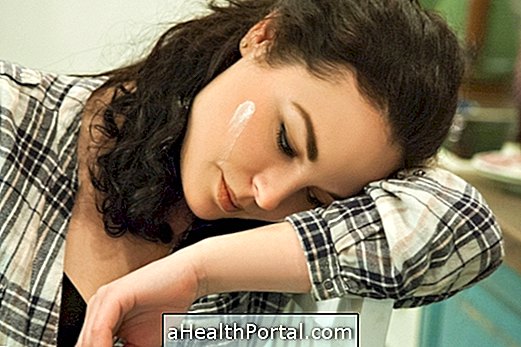
The cornea can be scratched causing great irritation and redness in one eye due to the presence of a speck, grain of sand or eyelashes that may have entered the eyes.
What to do: In this case, washing the eyes with the chamomile tea or with artificial tears that you buy at the pharmacy can help eliminate the foreign body, relieving pain and discomfort.
Do not rub your eyes, put your fingers on the eyeball or put water on the tap, because it can be impure and contain microorganisms that can cause eye infection to try to take the foreign body in this way. It is also not advisable to open your eyes to the pool or the sea, as these waters may be dirty and contaminated. In addition the chlorine used to keep the pool clean can irritate the eyes.
2. Dry eye syndrome
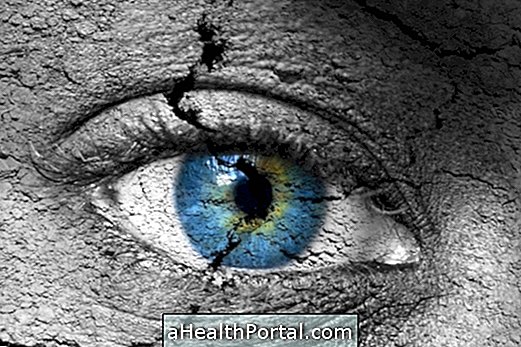
People who work by spending many hours in front of the computer, spend hours watching television or using the tablet or cell phone to use facebook or watch videos are more likely to suffer from dry eye syndrome, a change that can make red eyes and irritated, especially at the end of the day. See more details of this change by clicking here.
What to do: The solution is to blink more often per minute and drip a few drops of eye drops or artificial tears into your eyes several times a day whenever you feel the eye is dry and irritated.
3. Allergy to creams or makeup
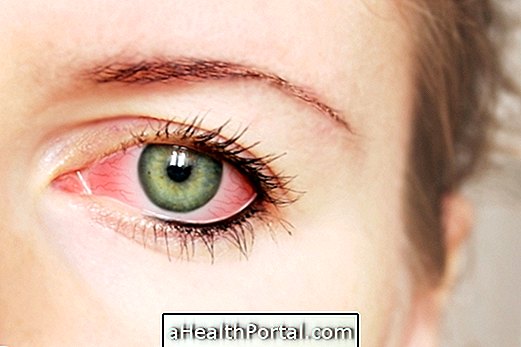
Some people find it easier to have an allergy so they can get red, irritated and watery eyes when they pass creams or lotions on their face. The same can also happen when using makeup, which is not hypoallergenic or has passed the expiration date. Shadows, eyeliner, eyeliner and mascara are the makeup products that can make your eyes red and irritated. The sunscreen proper for the body should not be used to pass on the face because it can cause allergy in some people, so it is ideal to only use the sunscreen facial across the face but taking care not to apply so close to the eyes .
What to do: Wash your face with cold water and thoroughly remove traces of creams and make-up and apply saline solution to the eyes, keeping them closed for a few minutes. Putting on an icy compress can help dislodge the eyes and soothe the irritation. The use of antihistamines such as cetirizine may be helpful when even after this care the swelling and redness do not stop. However, if these symptoms remain even after these care a doctor should be consulted. See a great compress that can help with the treatment by clicking here.
4. Conjunctivitis
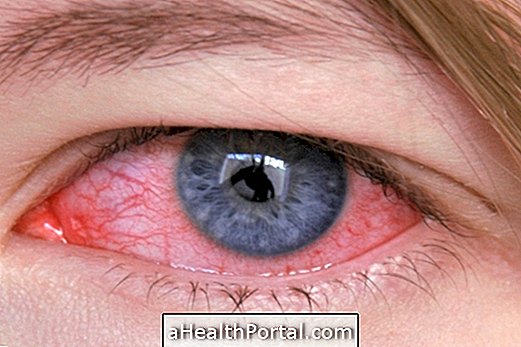
Conjunctivitis is inflammation or infection of the membrane lining the eyelids and the surface of the eye and in this case the symptoms include pain and redness and irritation that can affect only one eye. Feeling of foreign body inside the eye and sensitivity to sunlight are also often present. Viral and bacterial conjunctivitis are contagious, and often the other eye is also affected before resolution of the problem. This can be caused by viruses or bacteria and is often one of the symptoms present in other diseases like Dengue or Zika, for example. However, allergic conjunctivitis is more common and is not contagious, being caused by the presence of a contact lens, for example.
What to do: Your doctor may recommend the use of antibiotic eye drops for bacterial conjunctivitis, but use only artificial drops or tears on the virus and be sure to keep your eyes clean. Wear dark glasses to help get you out of the house, but using them indoors can be a good option to feel more comfortable when you are on your computer, tablet, mobile phone or watching TV. See some examples of conjunctivitis eye drops.
To avoid transmission of the disease to others it is recommended to take great care of hygiene and always wash hands with soap and water or alcohol, especially after cleaning the eyes or coming in contact with the secretions. The child with conjunctivitis should stay home and avoid going to school.
5. Corneal scratching

The scratch on the cornea is a very common situation that can make your eyes red and irritated. This can happen during a football game, for example, when being attacked by a cat or even when a mote or a very small stone enters the eye.
What to do: Wash your eyes with cold water, if you can not open your eyes, wait a few moments until you try to open your eyes again. Put on an ice pack and protect the eyes by wearing sunglasses and avoid getting into the sea or pool. See other care needed by clicking here.
6. Bump or trauma to the eyes or face
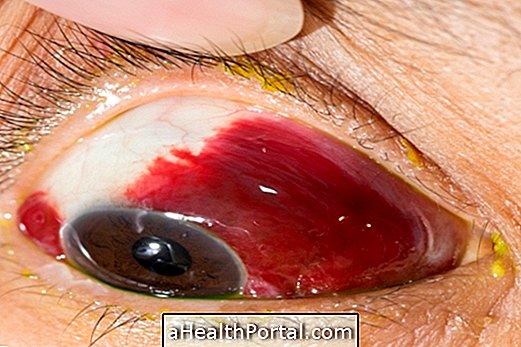
Any blow to the face or head, such as in a fall or traffic accident, can cause subconjunctival hemorrhage due to rupture of small blood vessels of this region leaving a very red mark on the eye.
What to do: Cold packs may relieve discomfort but no specific treatment is necessary because the redness disappears by itself. However, it is important to see a doctor to see if there are other injuries that need treatment. See Treating Eye Injury.
7. Glaucoma
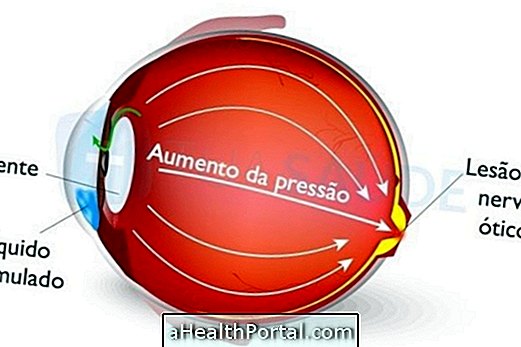
Glaucoma is an eye disease that can make the eyes reddish, as well as cause headache and pain in the back of the eye. This disease should be diagnosed by the ophthalmologist after performing specific tests that measure eye pressure.
What to do: To control this disease that has no cure and thus decrease the risk of blindness should use the eye drops indicated by the doctor daily. In some cases it may be necessary to resort to surgery. Understand each of these possibilities in: How to treat glaucoma to prevent blindness.
8. Blepharitis
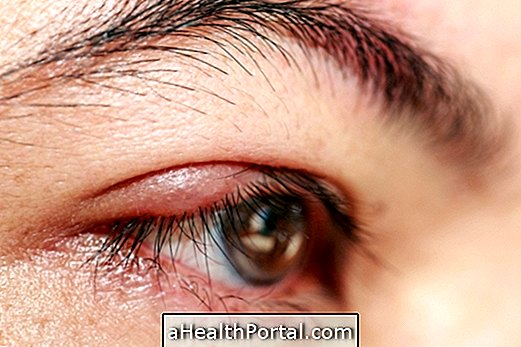
Blepharitis is an inflammation of the eyelids that makes the eyes red and irritated beyond the presence of small crusts that can make it difficult to even open the eyes when waking up. This is a common change and its treatment can be time consuming, especially when it is caused by a change in the Meibomius glands. Learn more details of this diseases in: Swollen eyelid and eye irritation can be Blepharitis.
What to do: The treatment is to keep the eyes always clean and therefore it may be necessary to wash the face with a neutral shampoo of child so as not to blaze the eyes and then apply a soothing compress that can be made with the chamomile tea. However, when this is a resistant bacterial infection the ophthalmologist may indicate the use of an antibiotic ointment.
9. Uveitis
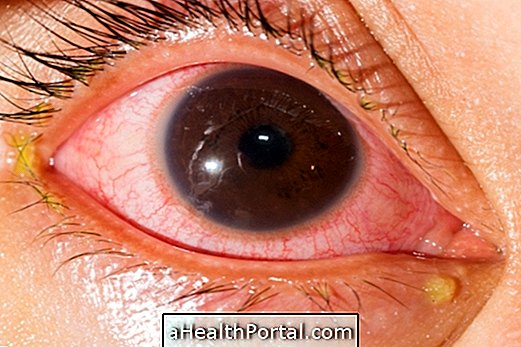
The uveitis that inflammation of the uvea, a part of the eye that is formed by the iris, the ciliary body and choroid, which form the front part of the eye, leaving the eyes very red. This is usually related to other diseases such as sarcoidosis, ankylosing spondylitis, psoriasis and Behçet's disease. See more about this disease here.
What to do: The treatment consists in reducing the inflammation and the formation of scars through glucocorticoid eye drops indicated by the ophthalmologist.
10. Keratitis
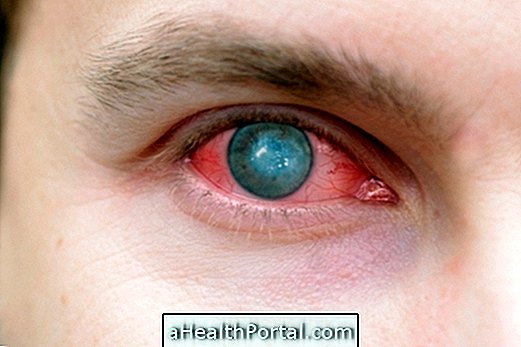
Symptoms manifest through a small skin that covers the pupil beyond pain, redness, irritation, foreign body sensation and photophobia. This is a common infection in hot and humid countries due to the entry of fungi present in leaves or flowers, for example. A biopsy is recommended to identify the microorganism causing the infection and antibiotics should be used as soon as possible to prevent loss of vision.
What to do: The doctor should prescribe the use of eye drops and ointments to apply daily to the eyes. See more about keratitis treatment by clicking here.
Warning signs to go to the hospital
These are signs that may indicate cerebral impairment or severe eye changes:
- His eyes were red from piercing;
- Have a headache and blurred vision;
- He is confused and does not know where he is or who he is;
- You have nausea and vomiting;
- The eyes have been very red for about 5 days;
- Have some object in the eye;
- You have yellow or green discharge coming from one or both eyes.
In these cases, it is important that the person is observed by a doctor to perform tests because it is important to know how to identify the causes of these symptoms and then start the most appropriate treatment. See the top causes and how to treat eye pain.
To prevent problems, see 5 Foods that Protect the Eyes.
